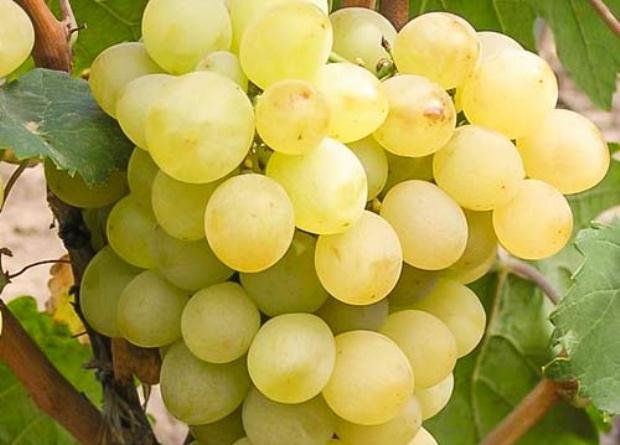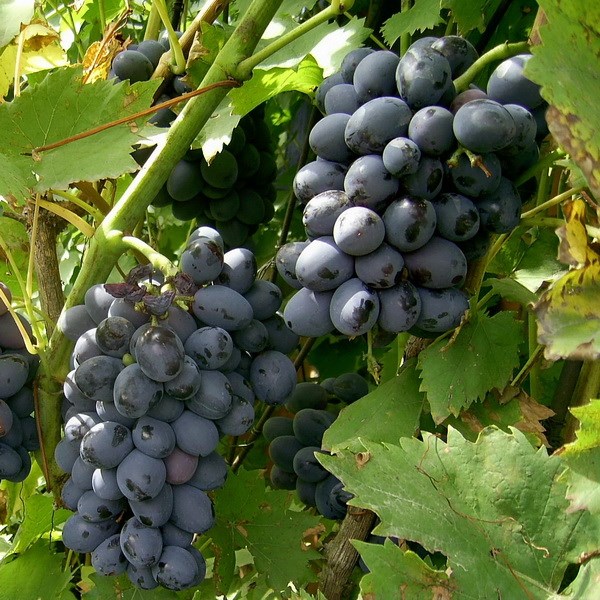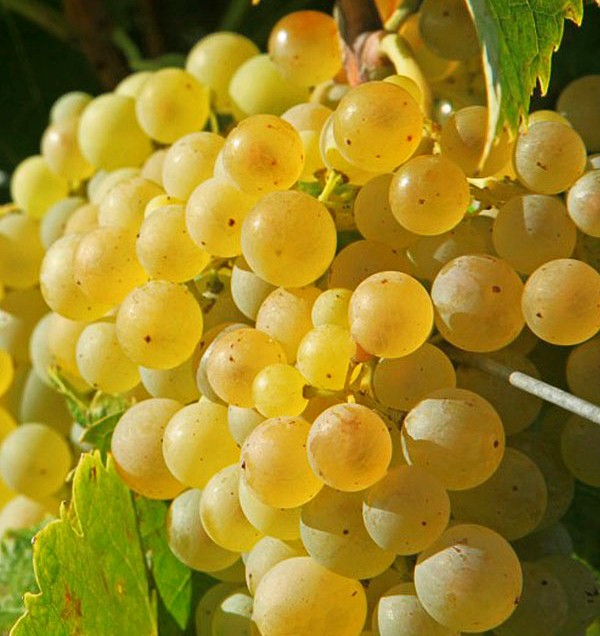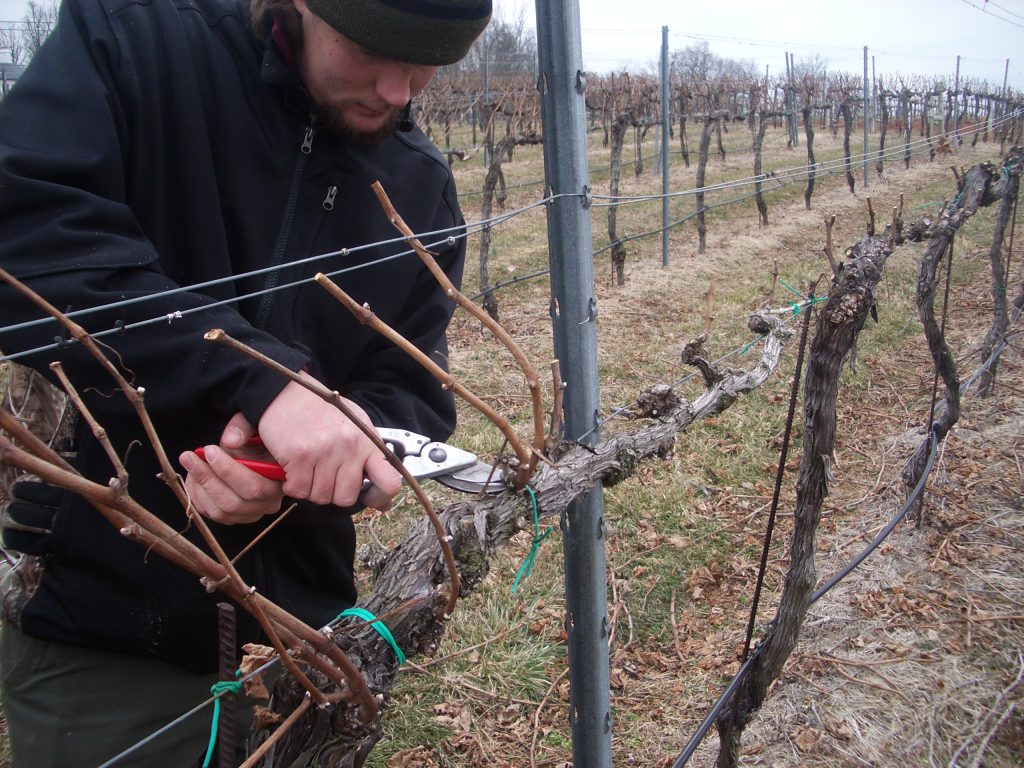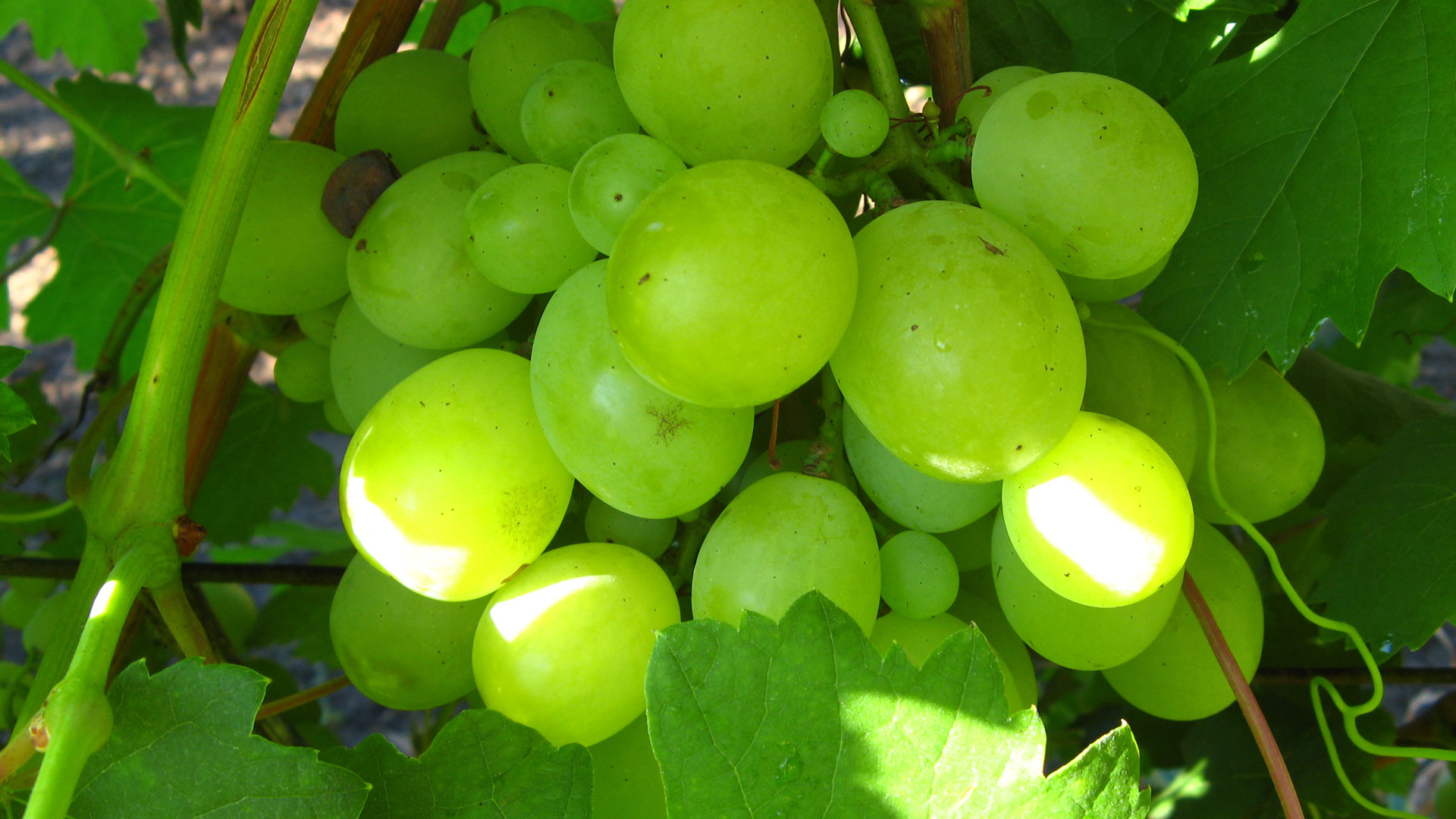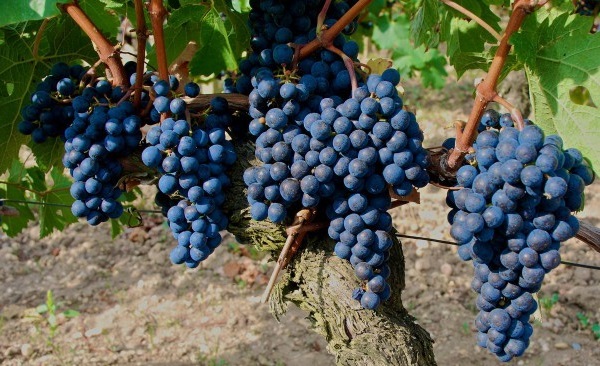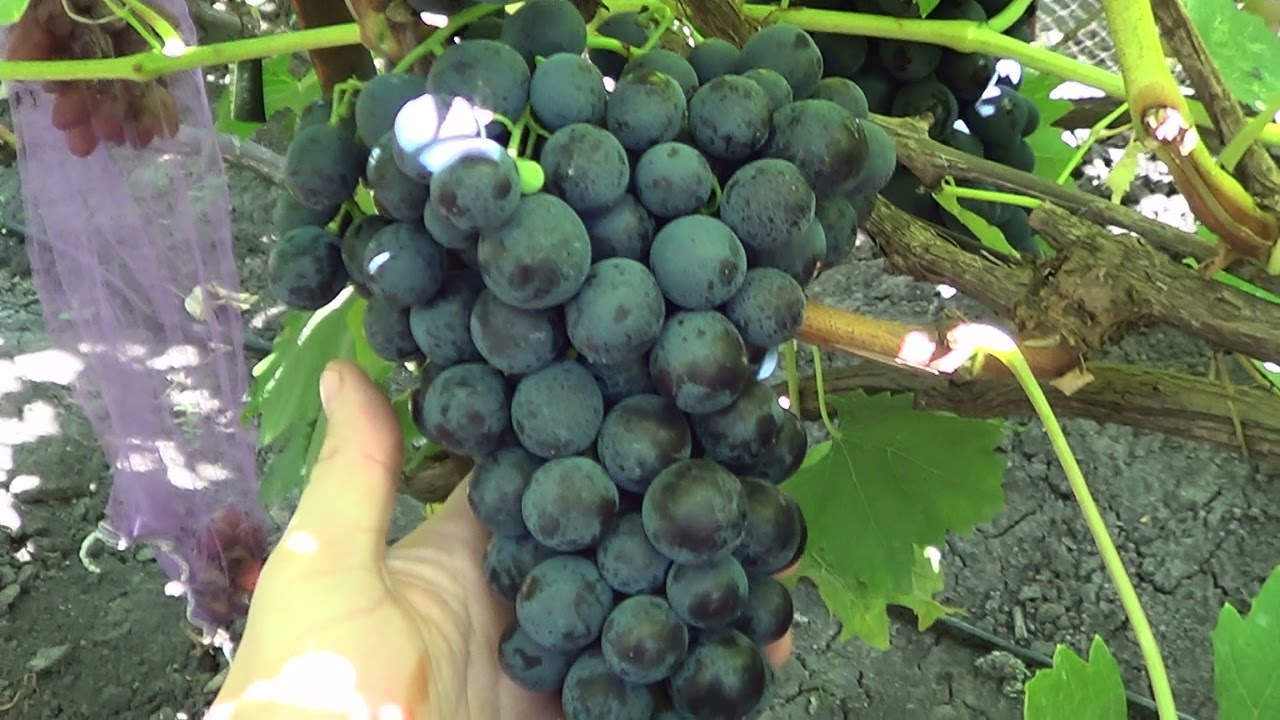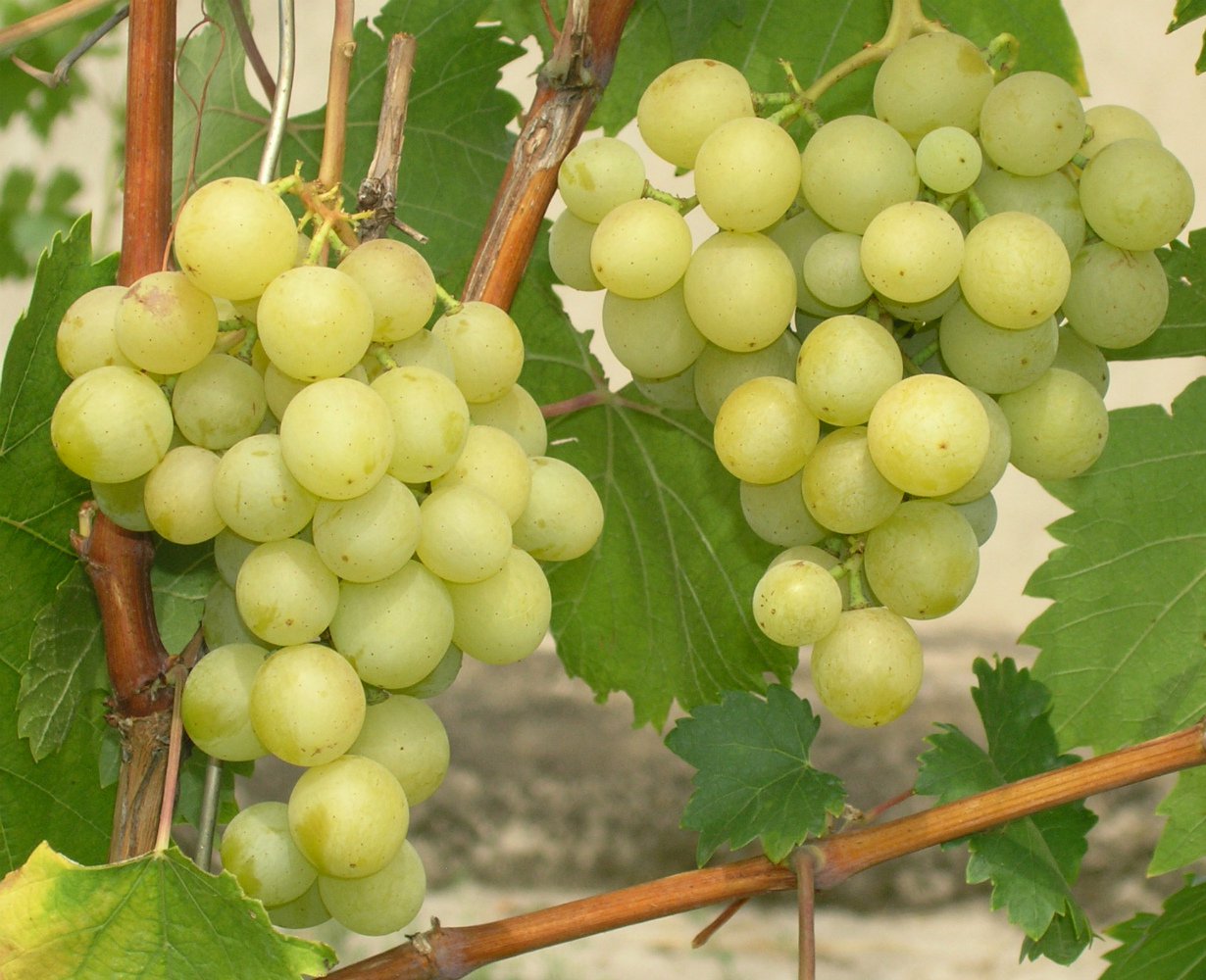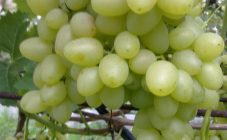Content:
Grapes have long ceased to be an exotic southern fruit; they are successfully grown not only in warm regions, but also in the Volga region, and in cooler climatic zones.
This has become possible thanks to the efforts of breeders who strive to create the ideal grape varieties that are more resistant to frosty winters. One of such frost-resistant table varieties is the Delight grape - a variety that can be grown in the Central, Central Black Earth regions, in the Moscow region and the middle lane. The main characteristics of the variety, its pros and cons, the nuances of cultivation - you can read about this below.
The history of the creation of the variety
Grapes Delight is the fruit of a selection of scientists working at the All-Russian Research Institute of Viticulture and Winemaking named after V.I. Ya.I. Potapenko. When breeding this variety, the following varieties were crossed:
- Early Russian;
- Dolores;
- Dawn of the North.
Delight took only the best features from its "parents" - yield, disease resistance, large size of berries.
The variety is zoned for cultivation in the southern, central regions of our country, in Belarus and the Baltic republics.
Characteristics and features of the variety Delight
Delight is a white grape, its description should begin with a story about the ripening of fruits. This varietal grapes are classified as early in terms of ripening of clusters - about 4 months pass from the moment foliage appears to harvest. Ripe brushes are harvested from the second decade of August to the last decade of September. The productivity of the vines is high - from 1 m² you can harvest up to 8-11 kg of delicious sweet grape clusters. The number of fruiting shoots on a bush can be up to 80-85%. Shoots - erect, powerful, each can ripen up to 1.5-1.6 brushes. The optimal load on one grape bush is 42-44 eyes. The clusters are large, conical in shape, of medium density, the mass of one ripe cluster can be 0.6-1.9 kg. The shape of the berries is oval, slightly oblong, the skin is light, dense, not prone to cracking. The average weight of a ripe fruit is up to 7 g. Ripe berries have a high sugar content - up to 23-25%, which is a very high indicator, and the acid content is low - up to 8.5 g / l.
The berries in a bunch are not pressed tightly together, therefore they are not subject to deformation. Taste qualities of ripe grapes - high, crispy berries, few seeds.
Thanks to the dense skin, ripe bunches can hang on the shoots for a long time, the harvested crop tolerates transportation well over long distances, and can be stored for a long time in appropriate conditions.
In general, it is possible to achieve an increase in the yield from this vineyard if the load on the vines is normalized, leaving no more than 30 eyes on each vine. In this case, clusters weighing more than 1.6-1.8 kg will form on the shoots.
The black variety of this variety is called the Brother of Rapture or the Black Baron.The peculiarity of the variety is that only female-type flowers appear on the shoots, the pollination of which will be better if vines with both types of flowering grow nearby. Black Baron also has a high yielding, stable annual fruiting. The first clusters appear on young bushes within a couple of seasons after planting. Brushes - wide, conical, dense. The weight of one bunch is 0.9-2.4 kg. The color of ripe berries is dark blue, almost black. The taste of berries is pleasant, sweet, slightly sour, slightly tart. The fruits are rounded, slightly elongated. Black Delight is highly resistant to most diseases affecting grape bushes, the exception is gray rot, for this variety the resistance to it is below average.
For good pollination, grapes with bisexual flowers are planted next to the bushes of red Delight, since only female flowers appear in red grapes. Brushes are of low density, have a conical shape, their weight can reach 1.0-1.4 kg. Up to 60-65% of fruits can appear on one shoot. Fruits are oval, slightly elongated, pink in color. Characteristics of berries: weight - up to 8 g, the skin is quite thin, almost invisible in food. The taste of the pulp is delicate, juicy, the amount of sugars is 21-22%, the amount of acid in the berries is up to 7.5 g / l. This varietal grape is resistant to most diseases affecting vineyards. Another characteristic plus is that ripe clusters are practically not affected by flying insects and birds.
Muscat Delight is an early hybrid capable of producing high yields annually. The seedlings begin to bear fruit a couple of seasons after planting. The harvest from the nutmeg variety of Rapture is harvested in 3.5 months - in the first decade of August. The bunches are conical, of medium density, the weight of one ripe bunch can reach 0.9-1.0 kg. Bushes are of medium height, shoots are erect, up to 2 meters high. When grown on rootstocks, the height of the shoots may increase. Shoots can bear fruit up to 90%, each of them ripens up to 2 clusters. Fruits are round, large, weighing about 6.5 g. Ripe berries have a dense skin of amber color. The taste is pleasant, sour-sweet with nutmeg aftertaste. The amount of sugars is 24%, the acidity is 6.5 g / l. High resistance of the hybrid to fungal diseases.
Agricultural technology of cultivation
It is better to graft white delight with cuttings on the stock of old bushes - it grows faster, bears fruit better. The black variety of this grape is best grown with cuttings that quickly develop strong and branched roots. For better development, he needs a lot of free space and good lighting. Delight red can be propagated by cuttings, layering, seedlings. Muscat delight reproduces well with cuttings, which quickly take root after transplantation. It can be grafted onto the stock.
The grafted cuttings can begin to bear fruit even in the next season.
The best soils for planting this variety will be sandy loam, loamy and black earth. Planting holes should be dug at a distance of at least 4.5 m from each other, at least 1.8-1.9 m should be retreated from the fence or buildings.
Pits need to be dug in advance - 25-28 days before planting the cuttings. The diameter of the pit is 0.65-0.7 m, and the depth is up to 0.9 m.A nutritious mixture of rotted compost and garden soil is laid out on the bottom with a thickness of at least 10-12 cm.The seedling is placed in the center of the pit, the roots are straightened, and covered a fertile layer of earth, watered. After a few days, the near-stem circle of seedlings is covered with a layer of mulch from high peat or straw.
Further care of grape seedlings consists of annual pruning, regular watering, top dressing, preventive spraying against diseases and "harmful" bugs.
Since the bushes of this grape grow quickly, they need regular formative pruning, in which no more than 40-45 eyes are left on the plant, so that no more than two brushes ripen on the shoots. In this case, the harvest from such a vineyard will be large, and the berries will be large and sweet. Correct pruning allows you not to overload the vines and shape the future harvest.
The vineyard bushes are fed with complex mineral fertilizers containing potassium and phosphorus.
Advantages and disadvantages of the variety
Winegrowers who grow varieties of the Delight grape variety note its following positive qualities:
- early maturity of all types;
- high productivity;
- large brushes and weight;
- good taste, aroma of ripe berries;
- ripe bunches can hang on the shoots for up to 1-1.5 months without losing their taste;
- berries are not damaged by insects and birds;
- the crop tolerates transportation well, can be stored for a long time at home;
- cuttings take root by 96-98%;
- with good care, the vegetative mass actively grows, the yield improves;
- resistance to drought and frost - above average;
- when carrying out preventive treatments, resistance to diseases increases significantly.
There are practically no drawbacks to this grape variety, but it should be noted that it is sometimes attacked by phylloxera; in rainy weather, the Delight grapes can crack.
Knowing and observing the agricultural techniques of growing this grape variety, by the end of the season, it will undoubtedly be possible to harvest a good harvest.
